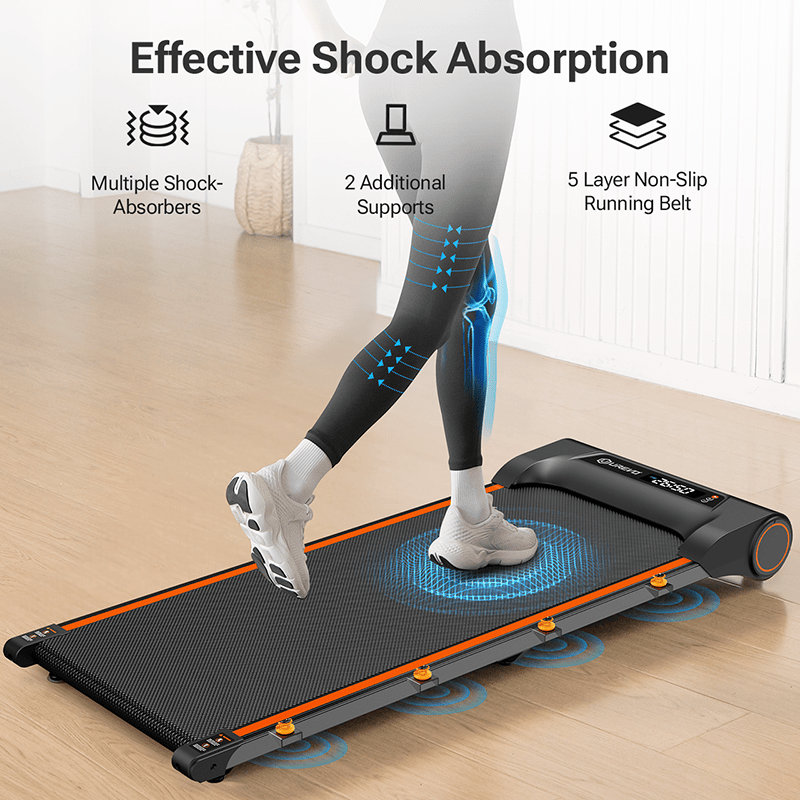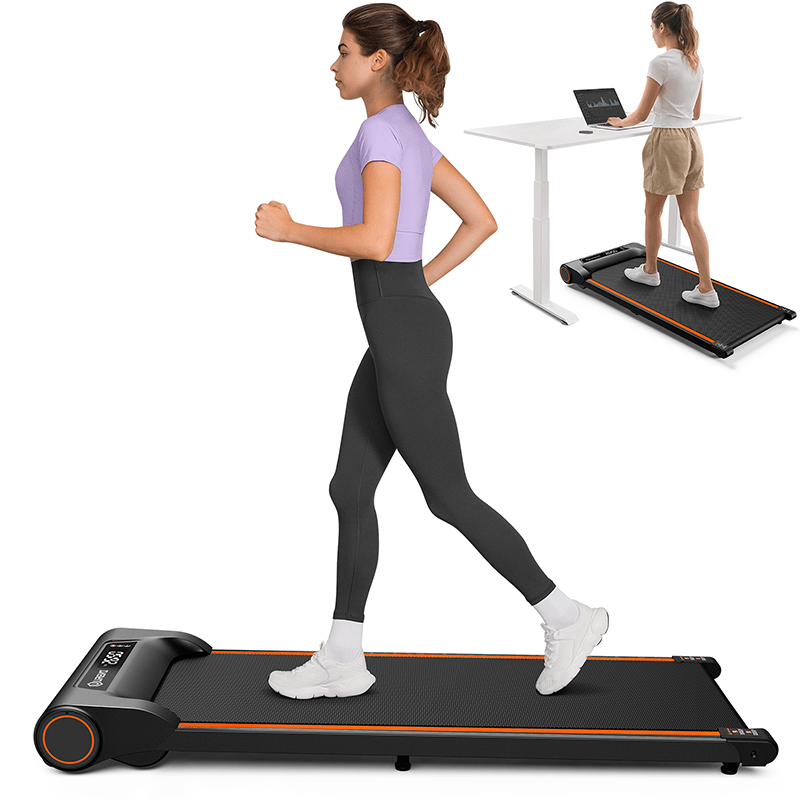Running, a popular exercise around the world because it's good for you and easy to do, can be done in different places. This article looks at two of the most common places to run: outside and on a treadmill. We'll compare the two and give you some tips on how to choose the best one for you.
Differences Between Running on a Treadmill and Outside
The primary distinction between treadmill and outdoor running lies in the environment. A treadmill offers a controlled setting with adjustable speed and incline, devoid of weather concerns and variable terrain. In contrast, outdoor running exposes you to varying weather conditions, elevations, and surfaces, providing a dynamic and sometimes unpredictable running experience.
Moreover, running mechanics alter slightly between these settings. Treadmills assist in propelling your body forward, potentially altering your natural running stride. Conversely, outdoor running demands more from your stabilization muscles to navigate uneven ground, resulting in different muscle engagement.
Advantages of Running on a Treadmill
- Precise Training Control: The ability to set a specific pace, incline, and duration on a treadmill facilitates precise training conditions that can be hard to replicate outdoors. This control is particularly beneficial for structured workout programs targeting speed improvement or endurance building, as it allows runners to maintain consistent conditions without external variables like weather or terrain.
- Safe and Convenient: Treadmill running removes several outdoor running hazards. It negates the risks of traffic, uncertain lighting conditions, and weather-related issues such as icy paths or extreme temperatures, making it a safer option, especially for runs during early morning or late evening hours. The convenience of home or gym access means workouts can be more regularly and easily incorporated into daily routines, regardless of external conditions.
- Less Joint Stress: The design of most treadmills includes mechanisms to absorb shock, offering a softer landing surface than concrete or asphalt. This reduces the stress exerted on the joints, particularly the knees and ankles, which can lead to fewer injuries and a reduced risk of chronic conditions like osteoarthritis, especially beneficial for older runners or those with pre-existing joint issues.

Disadvantages of Running on a Treadmill
- Boring: Running in place while facing a static environment can quickly become dull, particularly for longer sessions. The lack of visual and physical stimulation often makes the exercise feel more strenuous and less enjoyable, which can demotivate runners and potentially affect their consistency and long-term commitment.
- Limited Skill Development: Unlike outdoor running, treadmills do not naturally improve agility or balance because the belt's movement simplifies the act of propulsion. This lack of varied terrain and the treadmill's consistent surface do not challenge the body to adapt to different conditions, which can impede the development of more complex motor skills and decrease overall athletic performance in varied outdoor environments.
- Cost and Space: Acquiring a treadmill involves a significant financial outlay, and high-quality models can be particularly costly. Additionally, a treadmill requires dedicated space within a home or gym, which can be a considerable constraint in smaller living areas. The ongoing need for electricity and potential maintenance costs also contribute to the total ownership expense.
Pros of Running Outside
- Diverse Physical Challenges: Outdoor environments naturally offer a range of surfaces and elevations, from flat, paved paths to challenging, hilly trails. This variety forces the body to continuously adapt, enhancing physical coordination, muscle strength, and overall balance. These adaptations can improve running technique and injury resistance, beneficial for overall fitness and performance in various sports.
- Boosts Mental Health: Running outdoors, particularly in green spaces or scenic settings, can significantly boost psychological well-being. Exposure to sunlight increases vitamin D levels and helps regulate circadian rhythms, which can improve sleep quality and mood. The changing scenery and fresh air also contribute to reducing feelings of depression and anxiety, making outdoor runs a valuable component of mental health management.
- Social Opportunities and Enjoyable Views: Outdoor running often provides opportunities for social interaction, whether through organized group runs, races, or casual encounters along popular routes. These interactions, along with the aesthetic pleasure of different landscapes, can enhance the enjoyment of running, encouraging more frequent and prolonged activity.
Cons of Running Outside
- Dependent on Weather Condition: The feasibility of outdoor running can heavily depend on local weather conditions. Extreme temperatures, precipitation, and other weather-related obstacles can interrupt regular running schedules and affect performance and safety, making it challenging to maintain a consistent training routine.
- Safety Concerns: The varying terrains and presence of traffic can pose significant safety risks. Uneven trails can increase the likelihood of falls, while areas with high vehicle traffic require heightened awareness and precautions, potentially stressing runners and limiting the areas where they can safely run.
- Air Quality: In urban areas, pollution levels can significantly impact air quality, posing health risks, especially for those with respiratory conditions. High pollution levels can reduce the benefits of exercise, leading to decreased lung function and potentially exacerbating health issues related to air quality.
Is Outside Running More Effective Than Treadmill Running?
If consistency, pace management, and injury prevention are your priorities, treadmill running might be more beneficial. For those seeking improved muscular endurance, coordination, and mental health benefits, running outdoors could be superior. Both forms burn calories effectively and can improve cardiovascular health.

Does Outside Running Burn More Calories Than Treadmill Running
Running outside may burn slightly more calories than running on a treadmill because of:
- Wind Resistance: When running outdoors, you face air resistance, which requires more effort and energy expenditure to maintain speed. This isn't replicated on a standard treadmill unless it's set with a specific incline.
- Varied Terrain: Outdoor surfaces are often uneven or involve inclines, which can increase the intensity of the workout compared to the relatively flat and consistent surface of a treadmill.
- Self-Propulsion: Running outside requires you to propel yourself forward without the aid of a moving belt, engaging more muscle groups and potentially leading to higher calorie burn.
However, the difference in calorie expenditure is not typically substantial. Adjustments on the treadmill, like increasing the incline, can offset these differences and make the workout equivalent in terms of calories burned. Personal effort, speed, and duration remain crucial factors in determining the total calories burned in any running session, whether it's indoor or outdoor.
How Treadmill Running Compares to Outside Running in Terms of Injury
Running outdoors typically involves more varied and natural movements, which can be both beneficial and risky. The irregular terrain forces runners to constantly adjust their stride and posture, potentially strengthening stabilizing muscles and improving overall agility and balance. However, this same unpredictability of surfaces-from pavement to trails-increases the likelihood of acute injuries like sprains and falls. Additionally, the harder surfaces often found outdoors, such as concrete, can increase the impact on joints, leading to stress fractures or chronic injuries like shin splints if not properly managed.
In contrast, treadmill running offers a more controlled environment, which can reduce the risk of immediate injuries caused by uneven surfaces or environmental obstacles. Treadmills are typically equipped with shock-absorbing features that lessen the impact on joints, beneficial for long-term joint health and reducing the incidence of impact-related injuries. However, the repetitive motion on a treadmill can lead to overuse injuries, as the body undergoes the same movements without variation. Adjusting the incline and speed can help mitigate some of these risks by varying the workout and engaging different muscle groups.
Treadmill Running vs. Outside Running: How to Choose
Choose treadmill running if consistency, controlled conditions, and injury prevention are your priorities.It's ideal for those who need to manage exact training metrics or who might have concerns about outdoor safety or unpredictable weather conditions. Treadmills are also a great option if you're recovering from an injury and need a gentler option, or if you live in an urban area where safe, accessible running paths are not readily available.
Opt for outdoor running if you're seeking to improve your muscular endurance, coordination, and mental health.The natural environment offers varied terrain and sensory stimulation that can enhance your physical and psychological well-being. Outdoor running is beneficial if you enjoy exploring different routes or if social interaction and community aspects of running are important to you. It's also the better choice for those training for outdoor races where adapting to varying conditions is crucial.
Mixing both treadmill and outdoor running is wise. For this can provide a comprehensive regimen that leverages the advantages of each, helping you to achieve a balanced and effective fitness routine.
Read More
- How to Start Exercising: A Beginner's Guide – Urevo
- The Effectiveness of Using a Walking Treadmill Under Desk – Urevo
- Is a Foldable Desk Treadmill as Effective as Its Non-Folding Variant? – Urevo
- All You Need to Know About Light Exercise – Urevo
- All You Need to Know About Running on a Treadmill vs. Outside – Urevo














